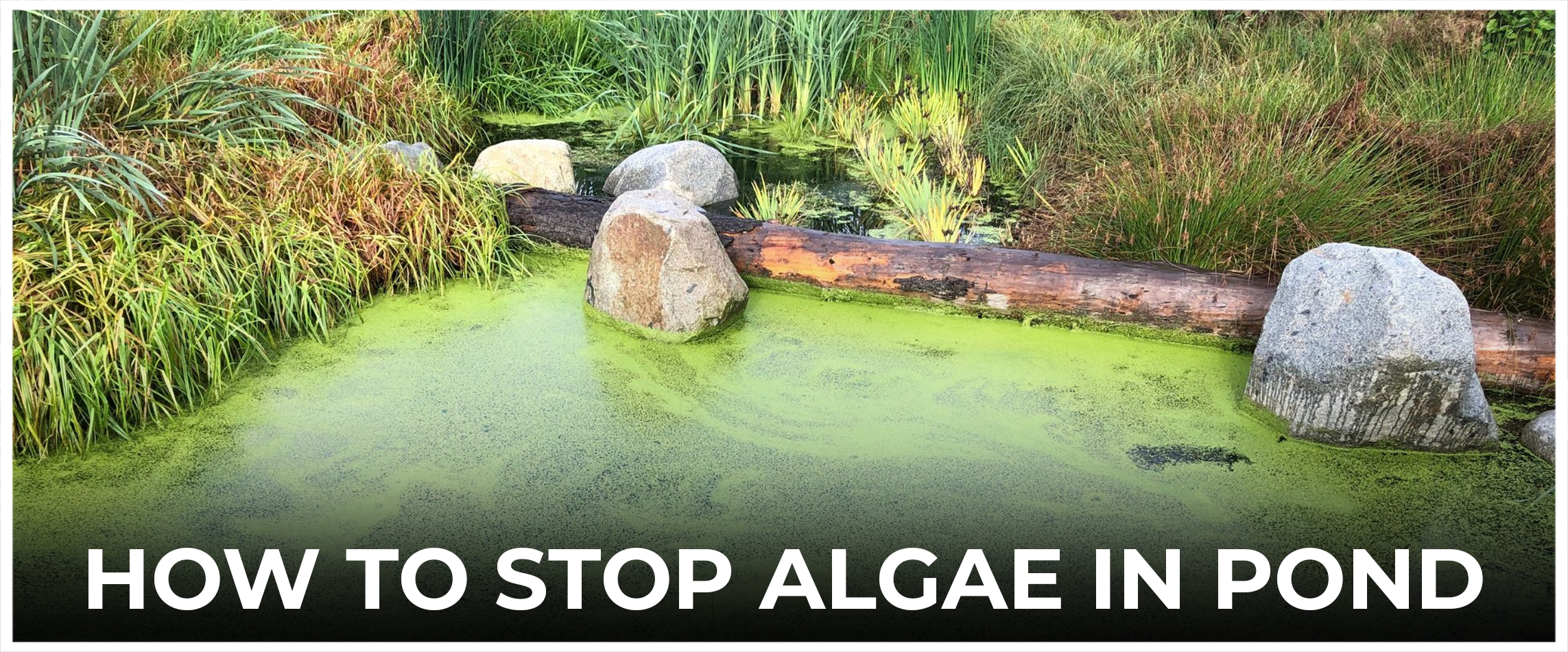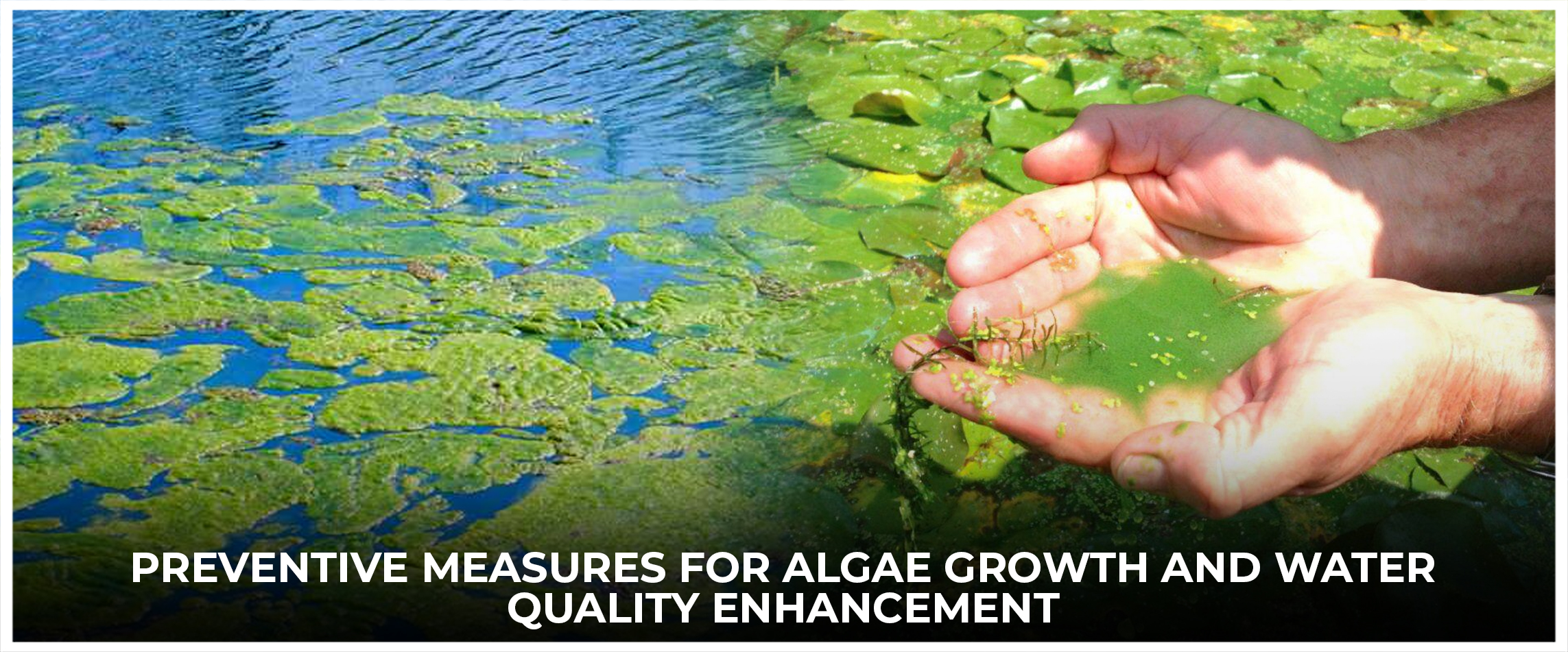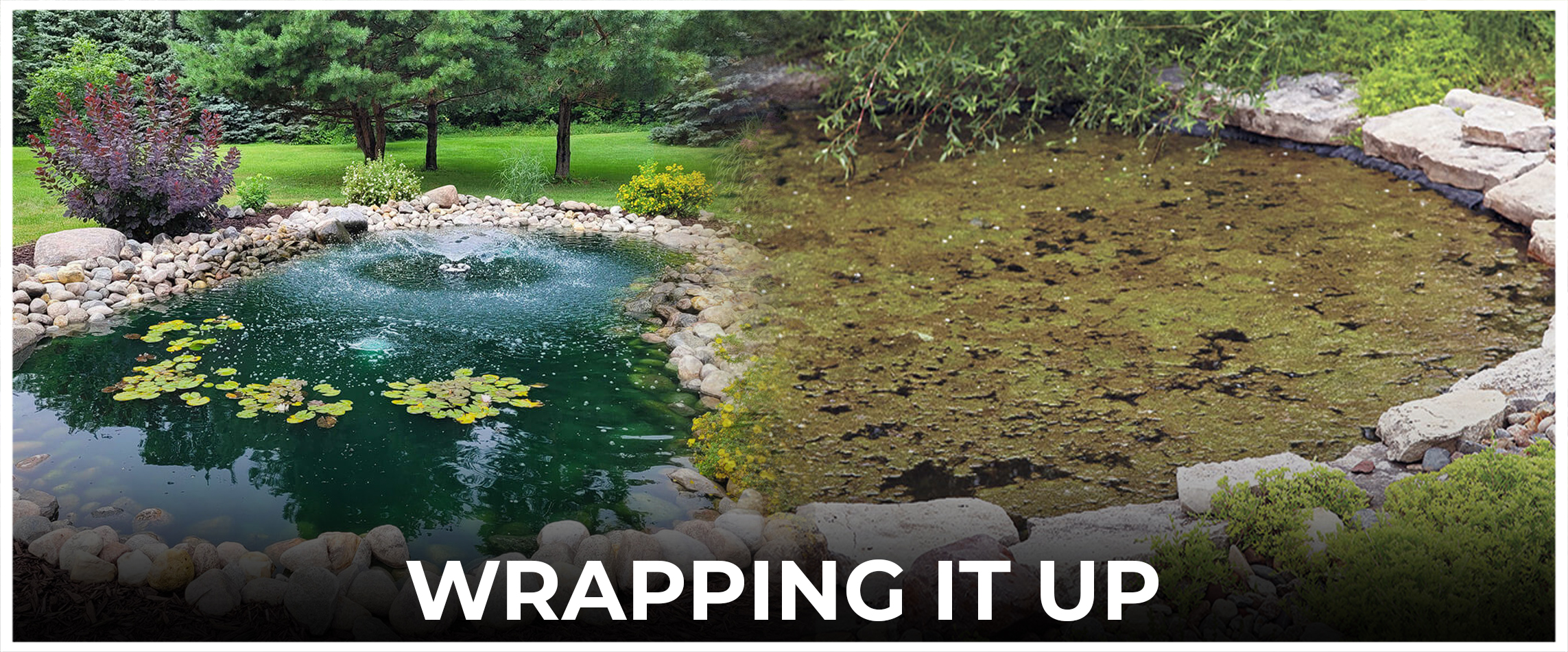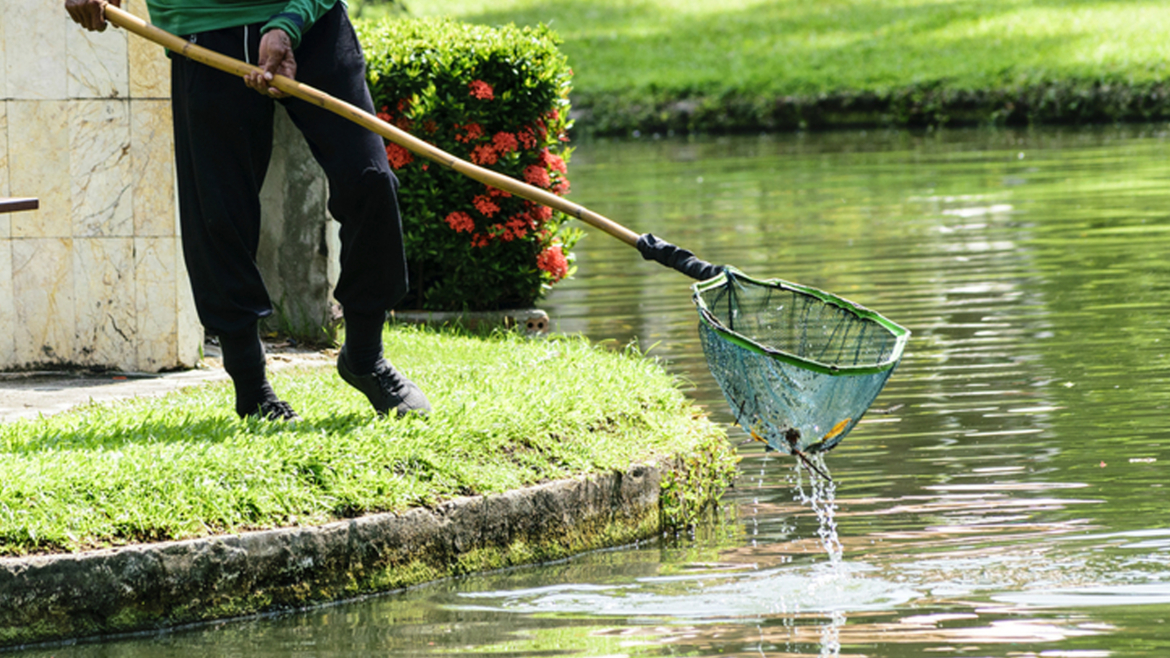Algae, along with other toxic elements, can degrade the waters of community lakes and ponds, leading to various detrimental conditions. Implementing effective algae control measures is essential to maintain the health and aesthetics of these aquatic environments
If you are wondering how to get rid of algae in pond naturally, there are several methods to consider. Algae has an unicellular life form, in which the cell contains the photosynthesis mechanism that enables it to produce food.
Photosynthesis, which only requires sunlight to be activated, brings forth a naturally occurring process that is able to grow the algae continuously having access to the same.
Algae is kept as harmful because it reduces water quality in pools, ponds, and lakes. The fast growing algae will invariably result in the occurrence of detrimental blue-green algal blooms in the water.
These algal blooms are known for producing toxins that may cause fish and domestic animals death. Either the bloom of blue-green algae or cyanobacteria will result in a depletion of oxygen and a discolored pond or lake.
For the people thinking of how to get rid of green algae in a pond naturally, implementing the natural ways like introducing aquatic plants, maintaining a proper water circulation, applying the barley straw or barley straw extract, and manual removal of excess algae can serve as the great first step.
Effective algae control measures are necessary to prevent such detrimental effects on aquatic ecosystems.

How To Stop Algae In Pond?
If you wonder how to prevent algae in ponds, to begin with, whatever type of algae it is, a high density of these microorganisms invariably causes visible modifications to all the water.
The algae blooms that arise from this uncontrolled multiplication have a murky effect on the water, as the natural transparency of the water turns into unsightly and undesirable cloudiness.
The visual alteration that comes with mangrove trees being cut down is not only ugly but also is the most visible sign of the ecological imbalance.
Uncontrolled blooms of algae are a multidimensional problem. It can lower water quality, release toxins to aquatic life, and disfigure the natural beauty of these aquatic locations.
Confronting the problem is not a one-off measure but a multifaceted approach involving taking preventive actions, regular surveillance and informal education of the community.
Those who prefer a home remedy for pond algae can implement preventive measures like planting aquatic weeds, improving the circulation of water as well as utilizing natural inhibitors of algae such as barley straw so as to obtain a good pond ecosystem.
Exploring The Stimuli Encouraging Algae Growth
Three types of pond algae can grow; these are planktonic algae, macrophytes, and flat algae.
Planktonic algae are microscopic algae, which found their way within the single cells. They can form groups or move in the water independently of other planktons.
This alga type begins to take over the water in a pond or a lake when it forms layers on the surfaces, and the water color changes from green, red, yellow or brown water.
Macrophyte algae in general resemble plants with leaves and stems. Macrophytes though are a little less common than planktonic algae in pond water.
In the more specific case of filamentous algae, this type of algae also consists of a single cell. This algae can grow to form mats that resemble long hair. There are several notable causes of algae growth, which include:
- Excessive nutrients
- High temperatures
- Stagnant water
An abundance of nutrients is an ideal condition for proliferation of algae control in ponds, This can also help the blue-green algae grow.
Generally, algae blooms in ponds are most frequent in the summer, like June, July, and August, because high temperatures can cause them. Lakes’ and ponds’ waters are barely moving, thus, sunlight easily penetrates the water surface allowing for algae growth.
One of the major methods that can be employed to solve the problem of algae growth is to perform periodic pond maintenance in all seasons of the year.
This maintenance may include anything from running pond aeration to binding phosphorus in the water. This introduction of the techniques now may make it possible to prevent algae growth in ponds completely.
Balancing Nutrient Levels For Pond Health
The biggest thing to focus on when trying to manage pond algae control is to not let excess pond nutrients particularly phosphorus and nitrogen develop as these cause the algae bloom in pond to develop rapidly.
Considering that the amount of algae growth in the water is directly linked to the amount of nitrogen and phosphorus nutrients in the water.
Hence, by reducing and limiting these nutrients in the pond water, the amount of algae growth should also be significantly reduced.
While keeping a specific nutrient away from the pond, try to keep fertilizer, grass clippings, or leaves from being into the pond water.
Mowing around the pond or the lake, avoid driving close to the water as this structure can be used as a natural buffer to reduce the introduction of harmful nutrients.
Not only should one focus on the vegetation to be put around the pond or lake but also create a buffer that can prevent nutrient runoff as well as reduce the places where erosion occurs.
This technique needs such plants as rushes and sedges, which are very beautiful and suitable for this method.
Utilizing Biological Enhancement for Algae Control
Another recommended technique that can be adopted for algae control in the pond or lake is the application of biological augmentation, which can dramatically enhance the quality of pond water by utilizing natural minerals, enzymes, and microorganisms to clean the water.
The microorganisms will get more nutrition and when the number of microorganisms increases, the amount of sludge and the harmful nutrients that exist in the water and known to boost the algae growth will reduce.
Eradicating sludge and phosphorus depletes the algae’s food supply, so the algae cannot flourish.
This is an effective process that can clean pond water by removing the muck without causing more problems by lowering the water quality.
This, combined with efforts to cut back on the excess nutrients, will help to reduce the number of algae blooms in pond water.
Continuous Operation of Pond Aeration Systems
It is important to always run the pond’s aeration system on a 24/7 basis. Regarding the kinds of pond aeration systems, there are two that are suitable, which are the submersed air diffused system and floating surface system, all of which control growth of algae in the water well.
Lastly, although they are not as cheap as other techniques like water filtration or pond planting, pond aeration systems are good means of keeping the quality of the water and reducing nutrients that enter the waters.
The diffusing oxygen systems work by increasing the oxygen diffused in pond water and this promotion of the aerobic bacteria population ensures healthy status of the water quality.
This kind of microorganism performs a particular function: breaking down organic matter and extra nutrients.
As to those who have the question of how to get rid of algae in a large pond, the installment of aeration systems for example submersed air diffused or floating surface will greatly help algae growth control and raise water quality.

Exploring the Potential of Solutions for Algae Control
In addition to the herbicide treatment, one could research the application of ultrasound for a better algae control strategy. With this method, the algae in the water is eliminated by up to 90 percent while at the same time preventing the newly emerging one.
Those sounds that have been produced through this technology are emitted using frequencies that cannot be heard by human ears because their ranges are beyond the human ability to hear.
Appropriate at particular oscillation, ultrasound technology permits an operator to manage development of algae in ponds or lakes.
Exploring the Dynamics of Algae Growth and Light Interaction
Cultures of single-celled /green algae/, when subjected to sunlight, tend to grow rapidly, making it possible for them to benefit from photosynthesis.
For the phytoplankton to obtain the appropriate amount of sunlight for the photosynthesis course to be completed, they must remain above the water surface all day until night sets in when they sink.
When placed into water, sound beams from the ultrasound can create a very shallow sound layer in the water surface.
The following layer results in sinking algae cells which negates the effect of photosynthesis.
This has come about from algae buoyancy which does not cause the cells to rise to the desired part of the pond. Bearing in mind this fact, the algae can’t grow to its full size and can die anytime.
Precisely the frequency used in accomplishing the algae control treatment often depends on the type of algae to be killed.
Strategies for a Cleaner Environment
Reducing the growth of algae in the nearby pond or lake also comes with some special advantages.
Algae control is crucial as algae, though not exactly harmful, can nonetheless make the water green or yellow, thus spoiling the pond’s original crystal clear color, causing no one even to come near.
Algae blooms are of bad influence upon the fish living in the water and, in consequence, the whole ecosystem is affected.
The issue is that if you use the pond or the lake for fishing, weeds may grow to the extent that it will be difficult for one to catch fish.
In case the water source gets contaminated by algae bloom, exposure to this substance regularly opens for health problems, smell issues, and bad taste in the water.

Preventive Measures for Algae Growth and Water Quality Enhancement
Worried about algae in ponds how to get rid of it? Avoiding all these issues can be easily done by taking some algae growth-preventing actions and by trying to keep the water quality at its maximum.
For people who are still confused about how to get rid of algae in pond, implementing controls from the beginning and keeping the water in the best condition are the essential steps for algae control.
The first thing to do is to prevent algae growth by reducing the number of undesirable substances into the water source, which might include the planting of certain plants near the pond or not cutting the grass in the area that could lead to nutrients getting into the water.
Algae reduction can be done effortlessly through biological augmentation, which in turn boosts the number of existing algae in pond water.
For leaning towards the long-term methods, look at the possibility of installment the pond aeration system constantly or using the ultrasonic algae control. Both fish and local wildlife will see considerable improvements in water conditions as algae blooms are lessened.
The long term disruption of the algal population also allows healthy and clear water with no nutrients that can harm.

Wrapping It Up
Eventually, nutrient-rich water is degraded by algae and normal operations are disrupted.
By understanding the causes of more algae growth, adopting nutrient reduction methods, biological augmentation, and new approaches like ultrasonic algae control as solutions, pond owners will be able to eliminate algal blooms and restore the ecological balance.
Pond aeration, combined with physical waste removal, and shading is of paramount importance with respect to the reduction of algae. These approaches are diverse and involve many aspects of the pond’s management.
Also, it is necessary to apply regular maintenance work since it will help the pond to stay pretty, enjoyable, and stress free for aquatic life.
Lastly, there is more to algae control than only improving the aesthetics of ponds because they are truly the environmental guardians of these precious natural resources whose future is guaranteed for generations to come.

